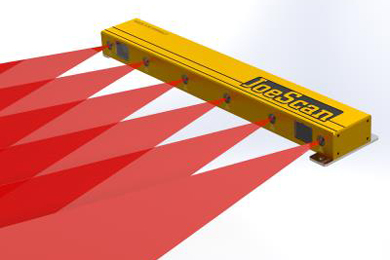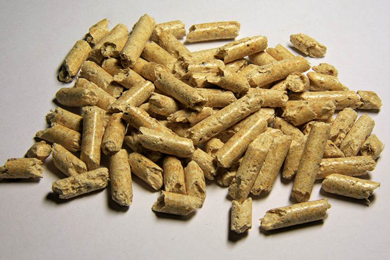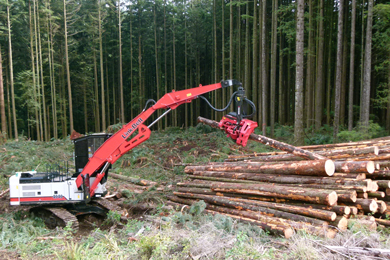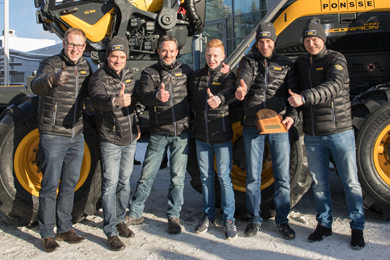A full-grown Southern pine beetle is still about half the length of a grain of rice, but state and federal forestry officials worry this tiny bug could have a monster impact this year on the state of Alabama’s $11 billion wood products industry reports Dennis Pillion AL.COM.( dpillion@al.com)
“With Southern pine beetles, the Latin name (Dendroctonus frontalis) actually means tree killer, and it is,” said Edward Loewenstein, associate professor of silviculture at Auburn University’s School of Forestry and Wildlife Sciences. “It is well-suited to take trees out.”
This year’s concerns are rooted in the large number of trees left stressed or already dying from last year’s record-setting drought. Drought-stressed trees don’t make sap as well as healthy ones, and that sticky sap is the tree’s primary defense against beetles.
Southern pine beetles carve distinctive winding tunnels or galleries like these under the bark of their host trees. Ronald F. Billings, Texas A&M Forest Service, Bugwood.org
“We’re in crisis right now because any organism that’s under stress is less able to deal with stress, and all of our pine beetles, bark beetles are stressors to trees,” Loewenstein said. “When you’ve got this extraordinary drought like we had this past year, that is a huge stressor put on not only individual trees but entire stands and entire landscapes.”
The results can be devastating to forest industries. The U.S. Department of Agriculture estimates a widespread outbreak that begin in 1999 in east Tennessee caused more than $1 billion in timber losses.
Foresters fear the dead or dying trees left by the drought could provide fuel for a similar large-scale infestation, and are already seeing evidence of increased beetle activity, even though outbreaks usually don’t flare up until the late spring or early summer.
“Normally in the winter you don’t see a lot of dying pines and beetle activity, but we’re seeing that a lot more this year,” said Tim Albritton, staff forester with the U.S. Department of Agriculture’s Natural Resources Conservation Service in Alabama. “We can tell this year is building up to be a pretty bad year for beetles.”
Foresters from the Alabama Forestry Commission, the USDA, the Auburn University School of Forestry, Alabama Farmers Federation (ALFA) and various private entities met in Montgomery last week to discuss how to handle the situation and share information about the extent of the problem, and are planning regular coordinated efforts among government agencies and private landowners to minimize the damage.
John Goff, director of the AFC’s Forest Protection Division, said during the meeting that the Commission began taking flights in February to look for beetle damage in Alabama’s forests and have already discovered 187 likely beetle infestations affecting 14,262 trees.
“We think the stars have aligned and we have the definite potential for major outbreaks this year,” Goff said.
Suspected damage from Southern pine beetle infestations is shown via aerial photographs.Alabama Forestry Commission
The AFC usually doesn’t start logging flights to look for beetle damage until May or June, but started early this year, in part due to the large number of calls the commission is getting from landowners to report possible infestations.
“Our phones are blowing up,” said Mark Martin, assistant forest health coordinator for AFC. “We’re getting calls left and right, every day.”
The number of beetle infestations has climbed for the last four years even without a major drought, and state forestry officials fear this year could be the worst in memory for Southern pine beetles.
Goff said the AFC identified 109 Southern pine beetle outbreaks in 2013, 168 in 2014, 378 in 2015 and 691 last year.
Multiple species of beetle to worry about
There are multiple species of pine beetles threatening Alabama trees this year, but the Southern pine beetle is the most feared because it attacks trees in clumps, leaving an expanding swath of brown, dead trees winding through the state’s evergreen forests.
That’s mostly because Southern pine beetles can’t fly very far, said Dana Stone, the Alabama Forestry Commission’s forest health coordinator. Southern pine beetle infestations often start in stressed trees, but can spread to and kill even healthy trees as the number of beetles increases.
Other beetles, like the Ips engraver beetle, are more likely to attack scattered individual trees in the forest rather than leaving an expanding cluster of dead trees behind in the woods.
“It’s important for landowners to know what kind of pest they may have in their trees,” Stone said. “If it’s the Southern pine beetle, they may want to go in and try to stop the spread of the infestation.
“If it’s an Ips engraver beetle, it depends on how many trees are dying, but you may want to just let it be and let the situation take its course.”
Landowners who suspect beetle infestation in their trees are encouraged to contact the AFC or a professional forester to determine what type of beetle they have and what the best treatment option is for their situation.
The usual recommended course of action for a Southern pine beetle infestation is to clear a buffer area around the infested trees at least as wide as the tallest trees in the infested group to prevent the beetles from spreading.
Those trees can be burned or simply left behind a safe distance from healthy forest trees. This “cut and leave” technique is often the recommended strategy for dealing with Southern pine beetle infestations, but would not be recommended for Ips beetle outbreaks, Stone said.
In the cut and leave treatment for Southern pine beetle outbreaks, infested trees are felled toward the middle of the area of the outbreak, along with a buffer of healthy trees in the direction the infestation was spreading.Ronald F. Billings, Texas A&M Forest Service, Bugwood.org
Loewenstein said the densely packed pine stands in many plantations can make beetle infestations particularly troublesome and thinning pine stands in advance can help mitigate the damage.
“The trick is to keep these stands before the fact as healthy as possible so they can fight off any additional stressors,” Loewenstein said. “If you’ve got stands that are overly dense, so individual trees within these stands have got very small live crowns, very little foliage, they’re in effect being starved and these are stressed trees.
“If we keep the stands healthy, if you add any one additional stressor, usually the problem is not huge, but right now we’ve got everything coming together at once.”
Forest products are big business in Alabama
Alabama’s forest products industry is a major economic engine in the state, and by some metrics is the largest industry in the state. Alabama is second in the country in production of pulp and paper and No. 7 in lumber production.
According to a report by Auburn University and the Alabama Cooperative Extension Service, Alabama produced more than $10 billion in forest products in 2010 and more than $11 billion when you include commercial logging products.
The study found more than 23,000 direct jobs created by Alabama’s forest products industry, and indirect employment impact of more than 110,000 jobs.
While forestry is a large industry in Alabama, it is often a less visible one. According to the AFC, 87 percent of Alabama’s 23 million acres of timber land, is owned by non-industrial private landowners.
“We’re hidden,” said Keith Plott, who works at the Louisiana-Pacific lumber mill in Hanceville. “You don’t see forest industries that much because we’re way back in the woods, we’re in small towns, small communities. Folks who own land may harvest once in a generation, but every year there’s a lot of folks who do that in Alabama.”
Thinning pine stands, as Loewenstein and others recommend, is not always easy for those small-scale landowners who may go several years without having their trees cut.
Even if those owners can find crews willing to thin their pine stands, or to carve out buffer zones around infestation sites, they may not be able to find a customer willing to take their product and be forced to leave valuable timber to rot on the ground.
Plott said his company is not accepting more lumber this year and conditions are similarly tight at mills throughout the Southeast.
“In a catastrophic outbreak like this, we can’t take the overflow,” he said. “We’re taking all the wood we can take right now and we’re really the only outlet in north Alabama.
“We’re full. We’re going to stay full. So if there are additional products on the market, where are they going to go?”
Plott said those tight conditions make it harder for Alabama landowners to cope with infestations.
“Forest landowners in Alabama are generational folks,” Plott said. “They want not only to produce forest products for themselves, for their kids, they want their kids to continue to harvest that land.
“But what’s the benefit of doing that if you have an infestation that takes all your money away that you’ve planned for your kids for college or your retirement?”
What to do about it?
Like many state government agencies, the Alabama Forestry Commission has endured significant budget cuts in recent years, and its leadership is concerned about that lack of resources in trying to combat this outbreak.
Gary Cole, Alabama’s interim state forester and head of the AFC, said the department has seen its funding for flights to watch for beetle damage has been cut by a third in recent years. The department also plays an active role in fighting forest fires, and must consider that when allocating resources.
Many of the private foresters in attendance at the Montgomery meeting last week said they would contact their representatives in the legislature to ask for more funding for AFC’s beetle operations. Groups are also investigating whether more federal funding would be available if the outbreaks are as severe as some fear.
Communications with landowners will also be a big priority for AFC, USDA and private forestry groups. Representatives from the Alabama Forestry Association and ALFA both pledged to reach out to their memberships to spread the word about pine beetles.
“This is really a time where communications and quick communications is going to be important,” Albritton said. “We’ve got to get this out to the landowners, because private landowners own a majority of the land in Alabama and if we don’t get them notified as to what’s going on and what they need to do, it could get real bad by mid-summer.”










